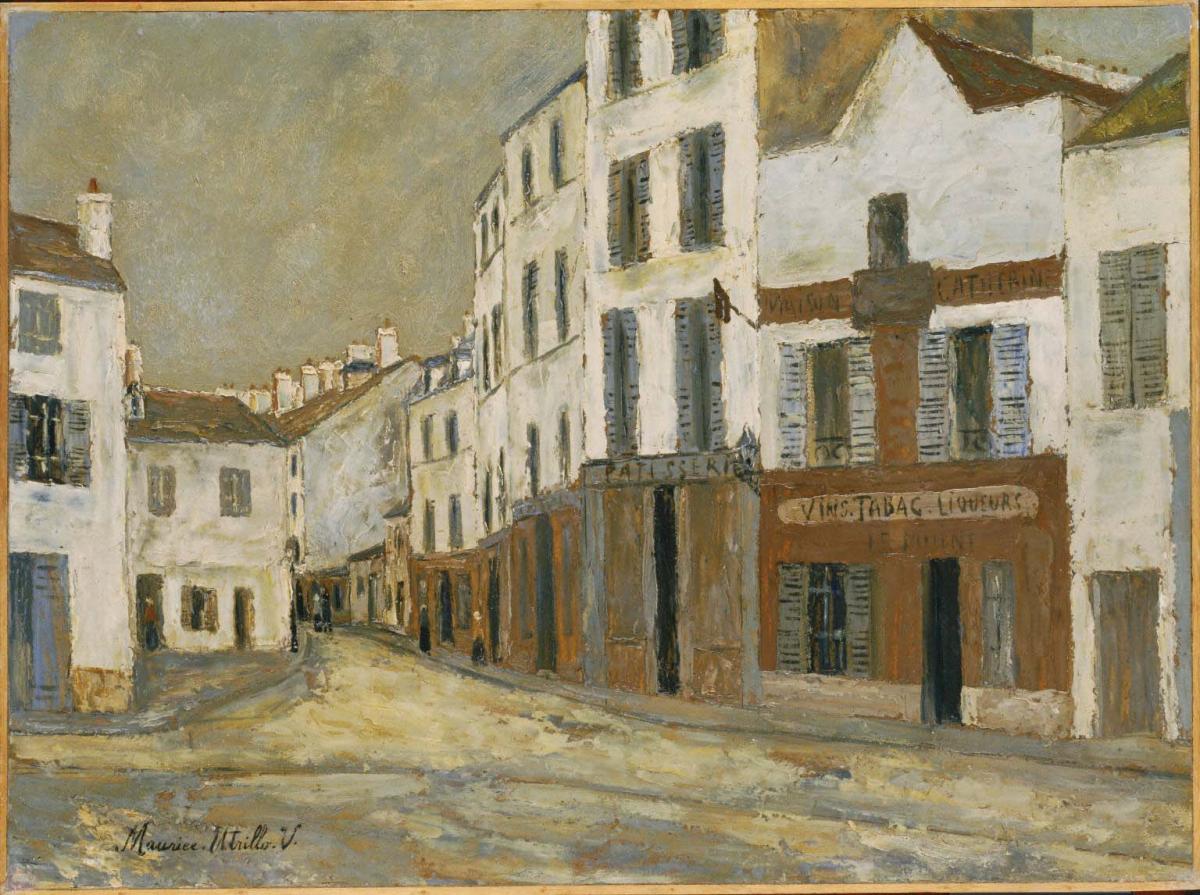Place du Tertre
Maurice Utrillo ( 1911 )

Maurice Utrillo chronicled the bohemian life and urban landscape of Paris. Born to the artists Suzanne Valadon and Miguel Utrillo y Molins, Utrillo grew up in the milieu of his mother, a friend of and model for Degas, Renoir, and Toulouse-Lautrec. After a hospital stay for alcoholism, Utrillo was encouraged by his mother to take up painting. In 1909–10, he began a series of closely related works, known as his White Period, featuring views of Gothic churches and street scenes derived from postcards. Over a sketch he applied heavy layers of opaque paint with a palette knife and brush on hard, thick, unprimed cardboard. By 1912, he had earned the admiration of avant-garde artists and had exhibited with Cézanne, Derain, Matisse, and Picasso.
In 1926, Duncan Phillips became interested in Utrillo’s White Period pictures. For him, they showed “enough personal expression and painterly distinction to justify [Utrillo’s] reputation as a master.” Phillips found this canvas in 1953, the year he hosted an exhibition of the artist’s work.